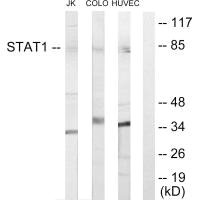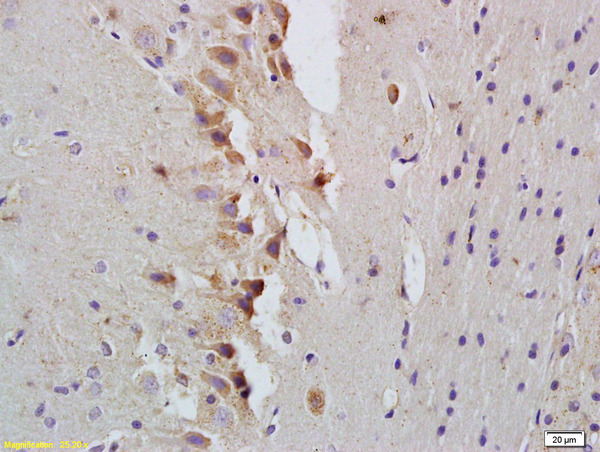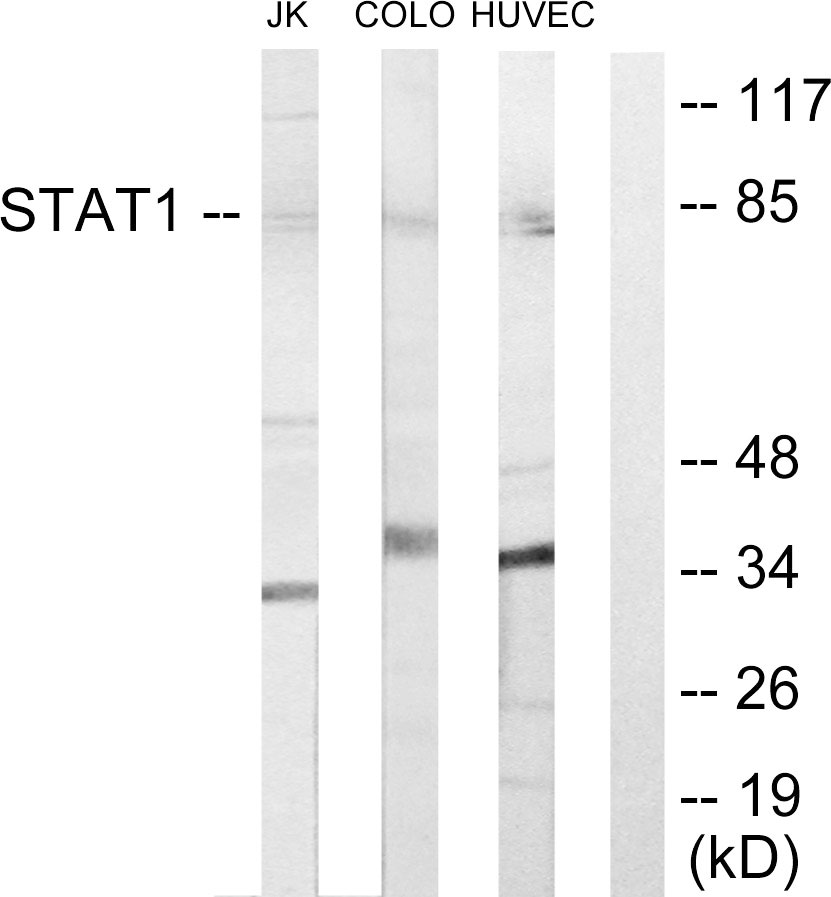
Western blot analysis of extracts from Jurkat cells, COLO205 cells and HUVEC cells, using STAT1 antibody.
STAT1 Antibody
CSB-PA697883
ApplicationsWestern Blot, ELISA
Product group Antibodies
ReactivityHuman
TargetSTAT1
Overview
- SupplierCusabio
- Product NameSTAT1 Antibody
- Delivery Days Customer20
- ApplicationsWestern Blot, ELISA
- CertificationResearch Use Only
- ClonalityPolyclonal
- ConjugateUnconjugated
- Gene ID6772
- Target nameSTAT1
- Target descriptionsignal transducer and activator of transcription 1
- Target synonymsCANDF7, IMD31A, IMD31B, IMD31C, ISGF-3, STAT91, signal transducer and activator of transcription 1-alpha/beta, signal transducer and activator of transcription 1, 91kD, signal transducer and activator of transcription 1, 91kDa, transcription factor ISGF-3 components p91/p84
- HostRabbit
- IsotypeIgG
- Protein IDP42224
- Protein NameSignal transducer and activator of transcription 1-alpha/beta
- Scientific DescriptionSignal transducer and transcription activator that mediates cellular responses to interferons (IFNs), cytokine KITLG/SCF and other cytokines and other growth factors. Following type I IFN (IFN-alpha and IFN-beta) binding to cell surface receptors, signaling via protein kinases leads to activation of Jak kinases (TYK2 and JAK1) and to tyrosine phosphorylation of STAT1 and STAT2. The phosphorylated STATs dimerize and associate with ISGF3G/IRF-9 to form a complex termed ISGF3 transcription factor, that enters the nucleus. ISGF3 binds to the IFN stimulated response element (ISRE) to activate the transcription of IFN-stimulated genes (ISG), which drive the cell in an antiviral state. In response to type II IFN (IFN-gamma), STAT1 is tyrosine- and serine-phosphorylated. It then forms a homodimer termed IFN-gamma-activated factor (GAF), migrates into the nucleus and binds to the IFN gamma activated sequence (GAS) to drive the expression of the target genes, inducing a cellular antiviral state. Becomes activated in response to KITLG/SCF and KIT signaling. May mediate cellular responses to activated FGFR1, FGFR2, FGFR3 and FGFR4. Schindler C., Proc. Natl. Acad. Sci. U.S.A. 89:7836-7839(1992). Hillier L.W., Nature 434:724-731(2005). Yan R., Nucleic Acids Res. 23:459-463(1995).
- ReactivityHuman
- Storage Instruction-20°C or -80°C
- UNSPSC41116161





